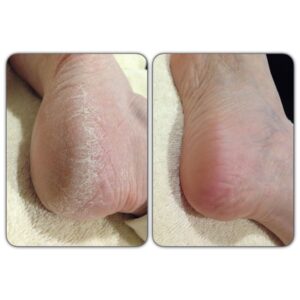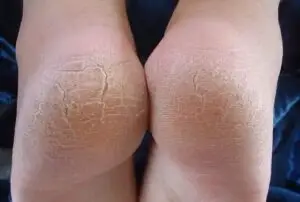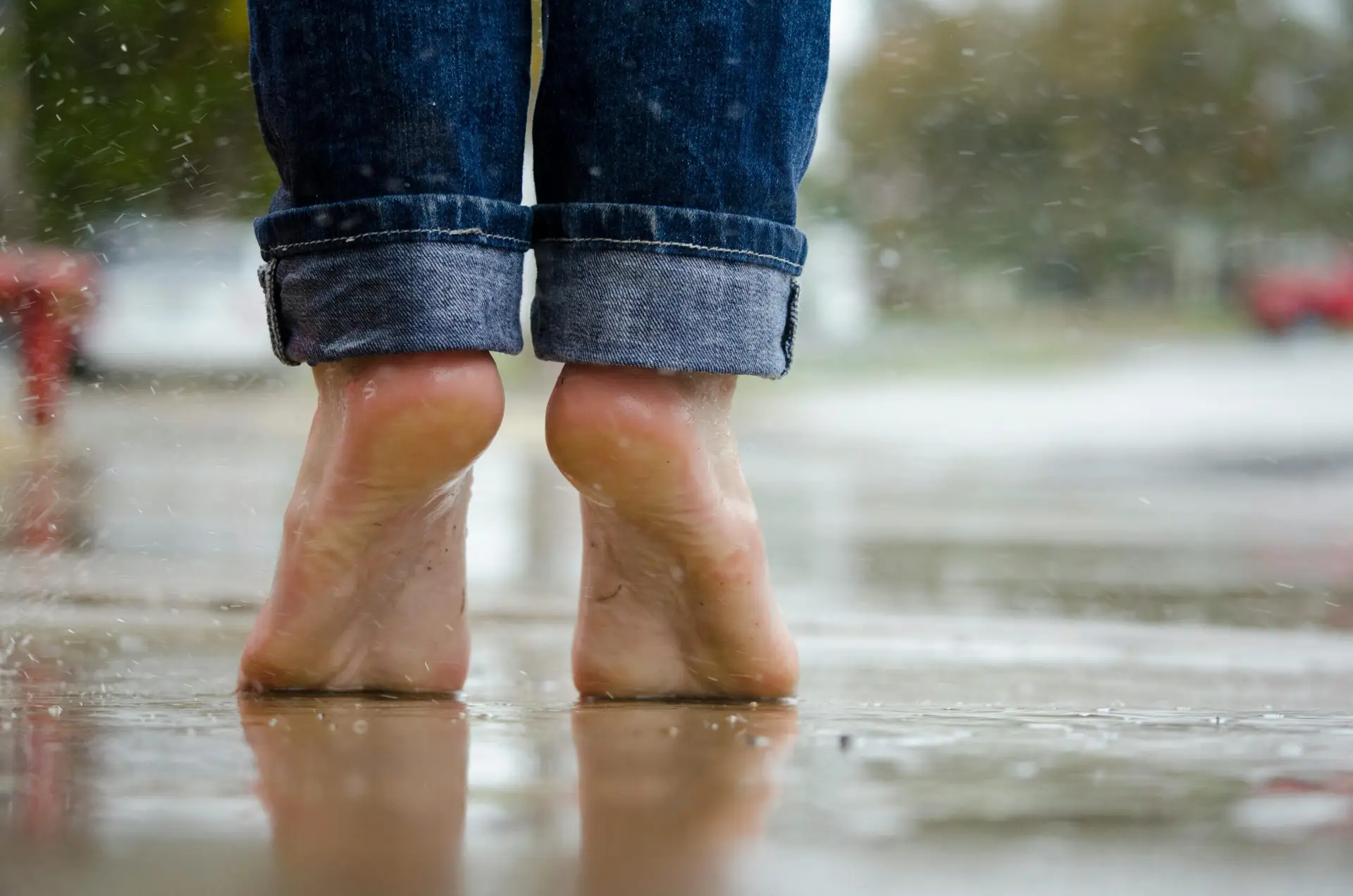21-Day Cracked Heels Healing Challenge: Step-by-Step Cure for Healthier Feet
Introduction
Are painful, dry, cracked heels stopping you from enjoying open-toed shoes or walking comfortably? You’re not alone—cracked heels healing is among the most searched topics for foot care in the US. From seasonal dryness to lifestyle habits, vulnerable heels can make every step uncomfortable.
But what if you could transform your feet in just three weeks? The 21-Day Cracked Heels Healing Challenge is your simple, effective roadmap for softer, smoother, pain-free heels. This guide combines expert advice, targeted home remedies, comparison tables, and a proven plan so you can see real results—fast!
- Dry skin (especially in winter or arid climates)
- Pressure and friction from standing long hours
- obesity
- Wearing open-back shoes, flip-flops, or sandals
- Poor foot hygiene
- Medical conditions: diabetes, eczema, hypothyroidism, athlete’s foot
How the 21-Day Cracked Heels Healing Challenge Works
This challenge uses a phased, day-by-day approach focused on three core areas—hydration and exfoliation, protection and repair, and prevention for lasting softness.
Week 1
Hydration & Gentle Exfoliation
Goal: Remove dead skin and start deep moisturizing.
Soak feet in warm water with Epsom salt for 15 minutes nightly.
Use a pumice stone or gentle foot file every other night to remove dry, flaky skin.
Apply a thick moisturizer with urea or lactic acid right after soaking (while skin is damp) for better absorption.
Put on soft cotton socks overnight to lock in moisture.
Week 2
Protection & Repair
Goal: Repair cracks and create a healing environment.
Switch to a heel balm rich in shea butter, coconut oil, lanolin, and/or vitamin E.
Spot treat deeper cracks with antibiotic ointment (if there’s minor bleeding or risk of infection).
Avoid walking barefoot; wear cushioned, closed-back shoes.
Reapply moisturizer morning and night.
Week 3
Prevention & Maintenance
Goal: Maintain results and prevent future cracking.
Commit to daily moisturizing—even after heels look and feel better!
Exfoliate gently twice this week to stay ahead of roughness.
Hydrate from within: drink plenty of water and eat foods rich in Omega-3 (flaxseed, salmon, walnuts) for softer skin.
Practice regular foot hygiene (clean, dry feet daily).

Top Cracked Heels Healing Remedies & Products
Cracked heels can be both painful and embarrassing, but with the right care, they heal quickly. Regularly exfoliating dead skin, moisturizing with nourishing creams like Scholl or O’Keeffe’s, and using simple home remedies such as coconut oil or honey masks can restore softness. Wearing silicone heel socks overnight and choosing cushioned footwear also helps prevent future cracks. Consistent care is key to keeping your feet healthy and smooth all year.
Remedies for Cracked Heels Healing
- Urea cream (10–40%): A dermatologist favorite for softening thick, rough heel skin.
- Lactic acid lotion: Gently exfoliates while boosting moisture.
- Shea butter & coconut oil: Locks in hydration for a nourishing feel.
- Petroleum jelly: Creates a moisture barrier, best overnight.
- Pumice stone: Physical exfoliant for stubborn dry skin.
- Epsom salt: Soothes and softens.
Antifungal powder/spray: Important if athlete’s foot is present.
Home Remedies vs. Professional Products
Home Remedies
Warm foot soak and pumice – softens dead skin naturally
Coconut oil massage – deep hydration using natural oil
Honey foot mask – antibacterial and helps healing gradually
Petroleum jelly with glycerin – locks moisture overnight
Aloe vera gel – soothes and repairs cracked skin
Professional Products
Scholl cracked heel repair cream – clinically tested for fast healing
O’Keeffe’s healthy feet cream – great for severe dryness and cracks
Cetaphil or urea-based heel balms – intense moisturization
Silicone heel socks – locks moisture overnight for quicker repair
Professional foot files – removes tough dead skin effectively
Lifestyle & Prevention Habits for Cracked Heels Healing
Lifestyle & Prevention Habits for Cracked Heels Healing
Drink enough water daily to keep your skin hydrated from within.
Moisturize your feet every night to prevent dryness and cracks.
Avoid walking barefoot on hard or dusty surfaces to reduce skin damage.
Wear cushioned shoes and socks that protect and support your heels.
Exfoliate gently 2–3 times a week to remove dead skin buildup.
Include foods rich in omega-3 fatty acids, vitamin E, and zinc for healthy skin.
Avoid long, hot showers which strip moisture from your feet.
Check your feet regularly for early signs of dryness or cracks to treat them early.
- Wash and dry feet carefully each morning.
- Apply moisturizer after every shower/bath.
- Rotate shoes—air them out to prevent fungus.
- Avoid harsh soaps that strip natural oils.
- Check for signs of infection (redness, swelling, pus) and seek care if needed.
- Drink 8+ cups of water daily; dry skin starts from within!
- Prioritize omega-3 rich foods: fish, flaxseed, walnuts.
- Add vitamin E via nuts, seeds, or supplements.
- Avoid excessive alcohol/caffeine, which dries out skin.

Comparison Table: Home vs Medical Cracked Heels Healing
| Product Type | Best For | Pros | Cons |
|---|---|---|---|
| Urea Cream | Thick, callused heels | Deeply moisturizes, fast | May be pricey |
| Heel Balm | Everyday dryness | Rich texture, repairs skin | Can feel greasy |
| Pumice Stone/Foot File | Exfoliation | Removes dead skin quickly | Risk of overuse/skin damage |
| Epsom Salt Soak | Sore, inflamed heels | Soothes, softens | Temporary relief |
| Petroleum Jelly | Overnight moisture | Seals moisture, cheap | Not a true healer; barrier only |
| Antifungal Cream | Athlete’s foot, fungal cracks | Prevents infection | Prescription may be needed |
FAQs About Cracked Heels Healing: Your Top 10 Questions
What causes cracked heels?
Cracked heels usually occur due to excessive dryness or pressure on the heel pad. Walking barefoot, wearing open-backed shoes, standing for long hours, exposure to cold weather, and lack of moisturization are common causes. Certain health conditions like eczema, hypothyroidism, and diabetes can also make the skin prone to cracks.How long does it take for cracked heels to heal?
Mild cases can improve within 7–14 days if you follow a proper moisturizing and exfoliating routine. The 21-day cracked heel healing plans work for most people. Severe or deep cracks may take several weeks and often need medical-grade creams or professional care.What cream is best for cracked heels healing?
Urea-based heel balms (10–25%) combined with lactic acid are highly effective. Look for creams that also contain shea butter, coconut oil, lanolin, or glycerin to deeply hydrate and repair the skin. Some popular products include Scholl Heel Repair Cream, O’Keeffe’s Healthy Feet, and Cetaphil Moisturizing Cream.Is it safe to remove cracked skin with a razor?
No, never use sharp blades or razors at home to remove cracked skin. This can cause deeper cuts, bleeding, or infections. Instead, soak your feet in warm water, use a pumice stone or a gentle foot file to exfoliate dead skin gradually, and follow up with a good heel balm.Can I prevent cracked heels from coming back?
Yes. Consistent care is key. Moisturize your heels daily, avoid walking barefoot, wear cushioned and closed shoes, exfoliate weekly, and drink enough water. Adding healthy fats and vitamins to your diet also supports softer skin, reducing the risk of future cracks.Do cracked heels indicate a health problem?
Sometimes, yes. While most cases are caused by dryness and lifestyle factors, persistent or deep cracks can indicate conditions like diabetes, fungal infections, or thyroid imbalances. If your heels don’t improve with regular care, consult a doctor or podiatrist.Can diet help with cracked heels healing?
Absolutely. Staying hydrated is crucial. Include foods rich in omega-3 fatty acids (like nuts, seeds, fish), vitamin E (avocados, spinach), and zinc (pumpkin seeds, legumes). These nutrients promote skin repair and elasticity, helping your heels heal faster and stay healthy.How do I care for severely cracked, bleeding heels?
Clean the area gently with mild soap and lukewarm water, apply an antibiotic ointment to prevent infection, and cover with sterile gauze. Use thick heel balm at night and wear clean cotton socks. Avoid walking barefoot, and if healing doesn’t progress or pain increases, see a healthcare professional.Are there effective home remedies for cracked heels?
Yes. Honey has antibacterial and moisturizing properties; olive oil and coconut oil nourish and soften skin; oatmeal soaks exfoliate gently; aloe vera cools and repairs skin damage. Use these remedies regularly and pair them with exfoliation and moisturization for best results.When should I visit a doctor?
Seek medical attention if your cracks are deep, painful, infected (redness, pus, swelling), not healing even after 2–3 weeks of home care, or if you have diabetes, circulation issues, or an immune deficiency. A doctor can prescribe stronger creams or professional treatments.
Conclusion: Step Forward with Confidence
Don’t let cracked heels keep you sidelined from life’s best moments. The 21-Day Cracked Heels Healing Challenge isn’t just a routine—it’s a transformation, empowering you to heal, protect, and maintain healthy feet year-round.
By combining exfoliation, expert moisturizers, smart lifestyle tweaks, and daily attention, you’ll rediscover the comfort and beauty of smooth, confident heels. Start today, stay consistent, and make foot health a cherished part of your self-care journey. Your feet carry you everywhere—give them the healing they deserve!


